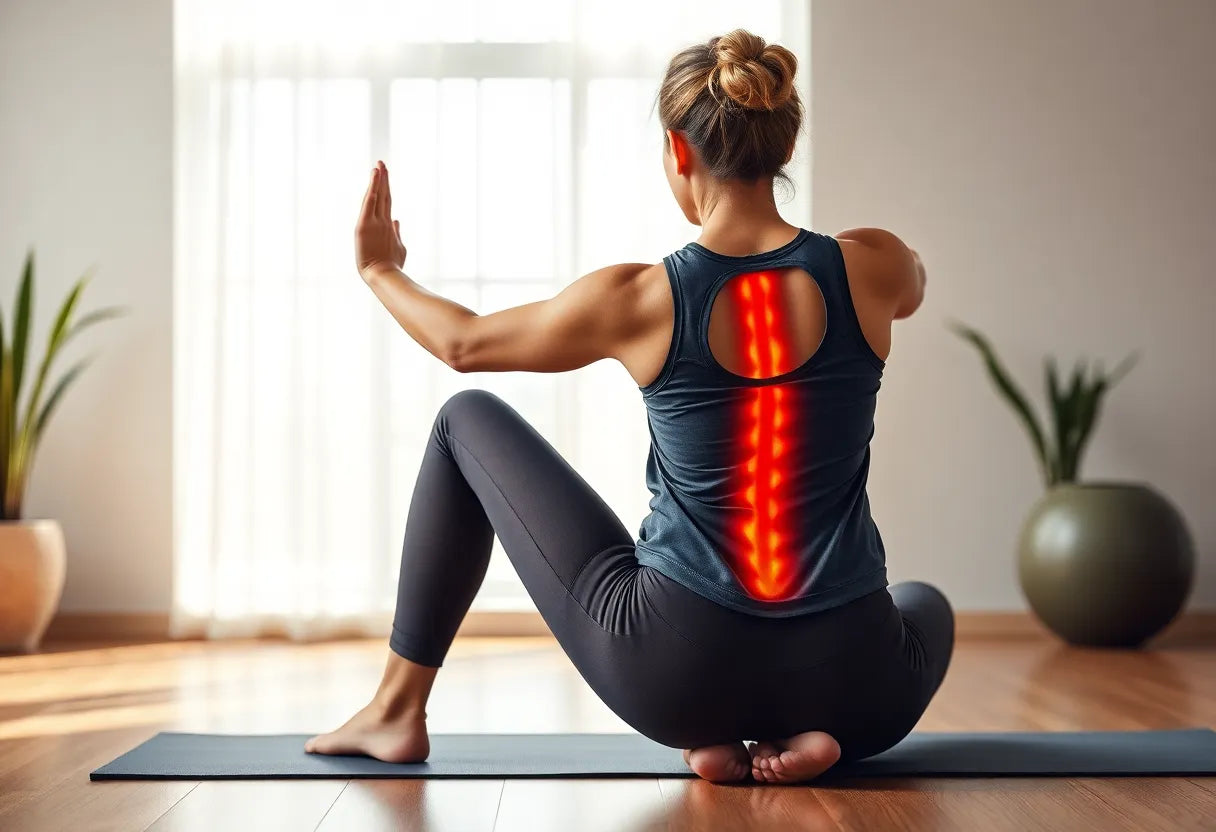Neck arthritis, medically referred to as cervical spondylosis, is a common condition that affects the cervical spine, primarily due to age-related degeneration. As people age, the wear and tear on the cervical vertebrae and discs can lead to the development of arthritis in the neck. This condition is particularly prevalent among older adults, with studies indicating that more than 85% of people over the age of 60 are affected by cervical spondylosis to some degree. The impact of neck arthritis on daily life can be significant, often resulting in chronic pain and restricted movement, which can interfere with everyday activities and reduce overall quality of life.
Common causes and types of neck arthritis
Understanding the causes of neck arthritis is crucial for effective management. The primary cause is the natural aging process, which leads to the degeneration of the intervertebral discs and the development of bone spurs. However, other factors can also contribute to the onset of neck arthritis, including autoimmune disorders such as rheumatoid arthritis, which causes the body's immune system to attack its own tissues, and traumatic injuries that can accelerate the degenerative process.
There are several types of neck arthritis, each with distinct characteristics:
- Osteoarthritis: This is the most common form of neck arthritis, characterized by the breakdown of cartilage in the joints, leading to pain and stiffness.
- Rheumatoid arthritis: An autoimmune disorder that affects the lining of the joints, causing painful swelling and potential joint deformity.
- Ankylosing spondylitis and psoriatic arthritis: These are less common forms of arthritis that can affect the neck, causing inflammation and fusion of the vertebrae, leading to a loss of flexibility.
Purpose of the blog
The aim of this blog is to provide practical steps and insights to help alleviate the pain associated with neck arthritis. By understanding the nature of this condition and exploring various treatment options, individuals can take proactive steps to manage their symptoms effectively. Whether it's through lifestyle modifications, physical therapy, or other conservative treatments, there are numerous strategies available to help ease the discomfort and improve quality of life for those living with neck arthritis. Stay tuned as we delve deeper into these approaches in the following sections.
Symptoms and diagnosis of neck arthritis
Neck arthritis, or cervical spondylosis, often manifests through a range of symptoms that can significantly impact daily life. Common symptoms include persistent neck pain and stiffness, which may worsen with movement. Patients often experience a limited range of motion, making it difficult to perform simple tasks such as turning the head. In some cases, nerve root compression can occur, leading to symptoms like numbness, tingling, or weakness in the arms and hands.
Diagnosing neck arthritis typically involves a thorough clinical examination by a healthcare professional. This may include evaluating the patient's medical history and physical symptoms. Imaging tests play a crucial role in confirming the diagnosis and assessing the extent of degeneration. X-rays are often used to visualize bone spurs and the condition of the vertebrae, while MRIs provide detailed images of soft tissues, including discs and nerves, helping to identify any nerve compression.
Conservative treatment options for neck arthritis
When it comes to managing neck arthritis, conservative treatment options are often the first line of defense. These non-surgical approaches focus on alleviating pain and improving function. Medications are commonly used to manage symptoms. Over-the-counter pain relievers, such as acetaminophen and nonsteroidal anti-inflammatory drugs (NSAIDs), can be effective for mild to moderate pain. In more severe cases, healthcare providers may prescribe stronger medications or muscle relaxants. For persistent inflammation, steroid injections directly into the affected area can provide relief.
Physical therapy is a cornerstone of conservative treatment for neck arthritis. A physical therapist can design a tailored exercise program to strengthen neck and shoulder muscles, improve flexibility, and reduce pain. Common exercises include chin tucks, neck rotations, and shoulder rolls, which help maintain mobility and alleviate discomfort.

Women's Posture Shirt™ - Black
Forbedrer holdning og kan lindre smerter. Patenteret Neuroband™-teknologi til støtte i dagligdagen.
Heat and cold therapy are simple yet effective methods for managing symptoms. Applying heat can relax tense muscles and ease stiffness, while cold therapy can reduce inflammation and numb sharp pain. Alternating between these therapies may provide optimal relief.
Lifestyle modifications also play a vital role in managing neck arthritis. Maintaining good posture is crucial, especially for those who spend long hours sitting or working at a computer. Ergonomic aids, such as supportive chairs and adjustable desks, can help maintain proper alignment and reduce strain on the neck. Regular exercise, focusing on low-impact activities like walking or swimming, can improve overall joint health and enhance flexibility.

Men's Posture Shirt™ - White
Aktiverer og stimulerer musklerne, kan lindre smerte og spændinger. Ideel til daglig brug og træning.
Advanced interventions and when to consider surgery
While conservative treatments are effective for many, some individuals may require more advanced interventions. Techniques such as platelet-rich plasma (PRP) injections and radiofrequency ablation are emerging as options for those with persistent symptoms. PRP injections use components of the patient's own blood to promote healing and reduce inflammation, while radiofrequency ablation targets nerve pain by disrupting pain signals.
Surgery is generally considered a last resort for neck arthritis and is reserved for severe cases where conservative treatments have failed or when there is significant nerve compression causing neurological symptoms. Surgical options may include decompression procedures or spinal fusion to stabilize the affected area.
Empowering patients through self-management
Empowering patients with knowledge and tools for self-management is crucial in the journey of living with neck arthritis. Education on the condition and understanding the importance of lifestyle changes can significantly enhance quality of life. Incorporating ergonomic aids into daily routines can alleviate strain and prevent further deterioration.
By actively participating in their management plan, individuals can take control of their symptoms and maintain an active, fulfilling life despite the challenges posed by neck arthritis. Regular check-ups with healthcare providers ensure that treatment plans are adjusted as needed, providing the best possible outcomes for long-term management.
Long-term management and prevention of neck arthritis
Managing neck arthritis effectively requires a comprehensive, personalized approach that extends beyond initial treatments. Developing a long-term management plan with your healthcare provider is crucial in addressing the ongoing nature of this condition. Regular physical therapy sessions can help maintain flexibility and strength, while lifestyle adjustments, such as maintaining good posture and using ergonomic aids, can prevent further degeneration.
Preventive strategies also play a vital role in managing neck arthritis. Engaging in regular, low-impact exercises like swimming or walking can enhance joint health and reduce stiffness. Incorporating neck-strengthening exercises into your routine can provide added support to the cervical spine. Additionally, staying informed about your condition and attending regular check-ups with your healthcare provider ensures that your treatment plan remains effective and up-to-date.
Conclusion
Understanding and managing neck arthritis is essential for maintaining a good quality of life. By exploring conservative treatments and making necessary lifestyle modifications, individuals can significantly alleviate their symptoms and improve their daily functioning. While neck arthritis cannot be cured, its symptoms can be managed effectively through a combination of medical interventions, physical therapy, and self-care strategies. Empowering yourself with knowledge and taking an active role in your treatment plan can lead to better long-term outcomes and a more fulfilling life.
Frequently Asked Questions
What is the most common type of neck arthritis?
Osteoarthritis is the most prevalent type of neck arthritis, characterized by the degeneration of cartilage in the joints.
Can neck arthritis be cured?
While there is no cure for neck arthritis, symptoms can be managed effectively with appropriate treatment and lifestyle changes.
What are the best exercises for neck arthritis?
Exercises such as chin tucks, neck rotations, and shoulder rolls are beneficial for maintaining mobility and reducing pain.
When should I consider surgery for neck arthritis?
Surgery is typically considered for severe cases with nerve compression or when conservative treatments have failed to alleviate symptoms.
How can ergonomic aids help with neck arthritis?
Ergonomic aids can improve posture and reduce strain on the neck, thereby helping to alleviate pain and prevent further degeneration.
Kilder
- Connecticut Orthopaedic Specialists. (2022). "What to Do About Arthritis in the Neck."
- Healthline. (n.d.). "Neck Arthritis: Causes, Symptoms, and Diagnosis."
- TriHealth. (n.d.). "Arthritis of the Neck."
- Orthopedic Institute. (n.d.). "Cervical Spondylosis (Neck Arthritis)."
- Hinge Health. (n.d.). "Neck Arthritis: Symptoms and Treatment."
- American Academy of Orthopaedic Surgeons. (n.d.). "Cervical Spondylosis (Arthritis of the Neck)."
- Cedars-Sinai. (n.d.). "Arthritis of the Neck."
- Cleveland Clinic. (n.d.). "Cervical Spondylosis."
- Medical News Today. (n.d.). "Neck Arthritis: Overview and More."


















